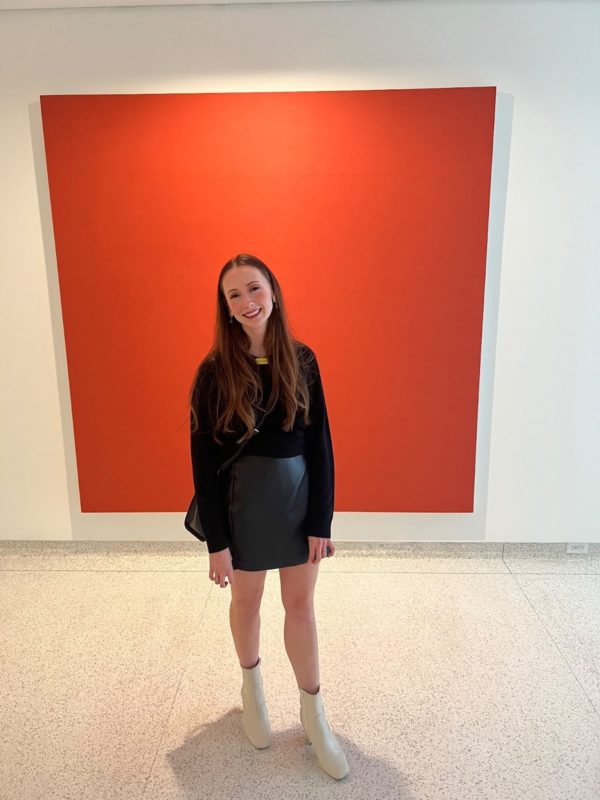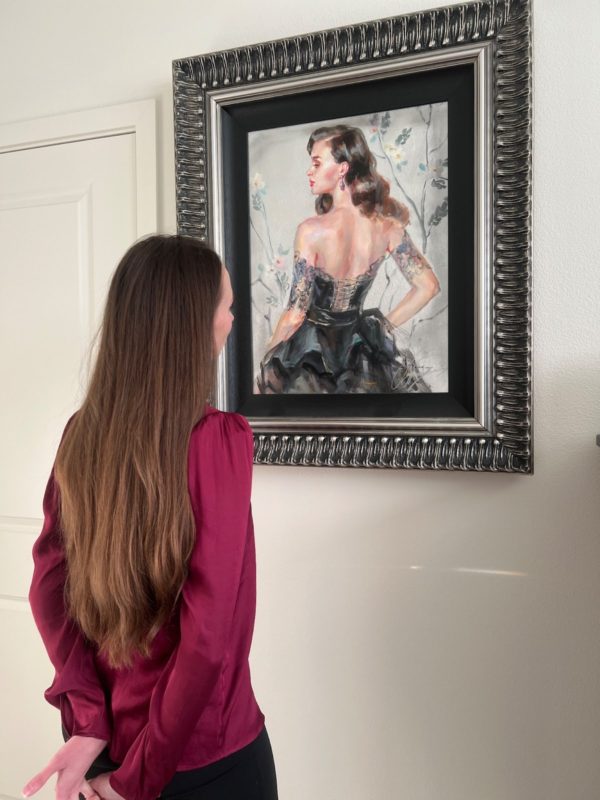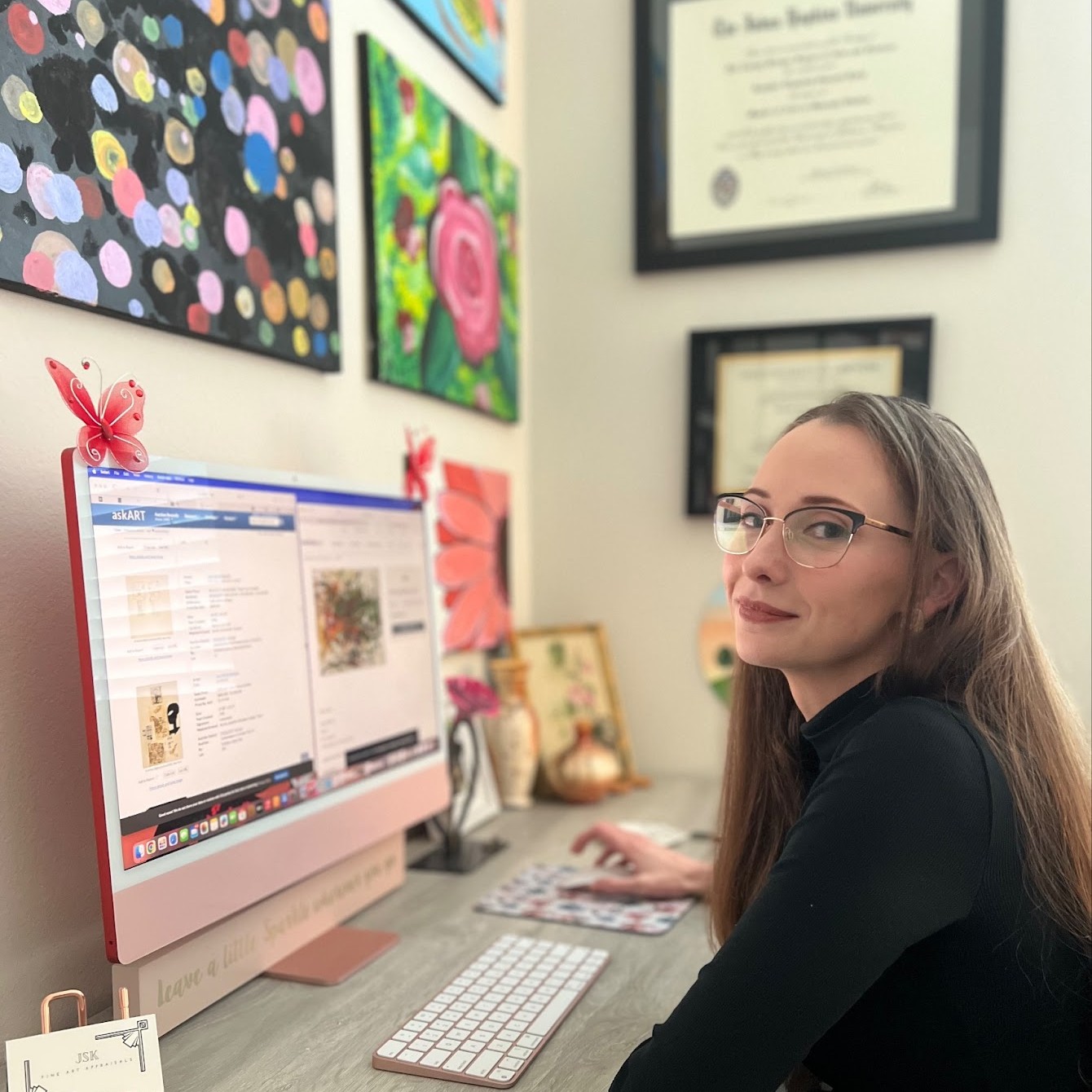Jennifer Salvetti-Kulla is an accredited fine art appraiser specializing in contemporary art. Fine Art Shippers spoke with her about the appraisal methodology and professional ethical standards. She also shared her advice on what to consider if you want to enter the field.
The Art of Appraisal: A Conversation with Jennifer Salvetti-Kulla
You have degrees in art history and museum studies. How did you make the transition from art history research to appraising? What influenced this decision?
Jennifer Salvetti-Kulla: I initially pursued a nursing degree with the intention of ultimately entering the medical field. However, my passion for art led me to take art classes as well, and I was immediately drawn to art history. I loved the subject so much that I began to wonder what it would be like to study it all day, every day.
Encouraged by my art history professor, I switched my focus to art history and worked hard to graduate in just three years, taking 20 credits per semester in my final year. After graduation, I took a year off to consider my options and ultimately decided to pursue a master's degree in museum studies. I felt that this field would be a perfect fit for me, and I could see myself working in a museum someday.
When my husband and I moved to San Diego, I was able to secure a job at an art gallery while completing my master's degree. Working at the gallery was an incredible experience, as I was surrounded by beautiful artwork and was able to assist with the selection of artists and other tasks.
Over time, I worked my way up to become the manager of the gallery. During this time, I met an art restorer who recognized my abilities and passion for art and encouraged me to consider becoming an art appraiser.
The pandemic provided me with extra time to research this field, and I found the International Society of Appraisers (ISA). I completed their core course in appraisals and recently finished my specialty course in fine art, submitting over 700 documented hours. I'm currently in my third year of running my appraisals business.
What art do you specialize in as an appraiser? Any specific period or genre?
Since I currently live in San Diego, where I am surrounded by a lot of early 20th-century and 21st-century art, I have developed a particular interest and expertise in contemporary art. So, it’s fair to say that this is my focus and specialization.

Could you share some memorable experiences or interesting cases from your practice?
Many clients don’t know of the value of their possessions and are often pleasantly surprised by the appraisal results. I recall one appraisal that stood out to me. The client had purchased a piece of artwork from Goodwill for just $50, completely unaware of its true value which was estimated at $5,000. She was overjoyed to discover the piece's true worth.
If owners are often unaware of their possessions’ worth, what eventually prompts them to seek an appraisal?
There are several intended uses for an appraisal, each serving a specific purpose. For instance, if you need insurance coverage for your artwork, it is important to redo your insurance appraisals every three years since the market and values change constantly. Another purpose is donation appraisals, which are necessary if you intend to donate a piece to a museum for a tax write-off. Estate appraisals are also common when people want to sell their belongings and need to determine their value. Finally, there is the general purpose of sales knowledge, where individuals want to know the market value of their artwork without necessarily intending to sell it.
What does the appraisal process involve: What stages does it include? What criteria do you use?
When a client contacts me for an appraisal, I usually request pictures of the item to become familiar with the artist and medium. After some preliminary research, I conduct an onsite inspection to gather necessary details such as size, medium, frame, and intended use of the piece. Next, I begin the research phase using various databases and auction catalogs to compare the artwork to similar pieces on the market. I also consider the artwork's condition, provenance, and whether it is typical of the artist's work when determining its value. After completing the research, I type up the appraisal and present it to the client, which normally takes one to two weeks, depending on the item.
The result of your work can be an appraisal report or an opinion of value. What is the difference between the two?
An official appraisal involves a lot of research and time, with a significant amount of data to support the established value. In contrast, an opinion of value is based on my knowledge and does not require in-depth research into the specific artwork. It provides clients with a range of potential values for their artwork.
Most of the time, I offer an opinion of value to clients who do not need an appraisal, either because the piece isn't valuable enough to justify the cost of the service or because they don't want to spend the money for a complete appraisal. While an opinion of value is not as targeted as an appraisal, it still provides a general idea of the artwork’s value.

While your focus is mainly on contemporary art, I'm curious to know if appraisers in the industry generally have specific specializations or if they are authorized to appraise different types of art.
Technically, I am a personal property appraiser specializing in fine art. I have a particular focus on contemporary art due to my background in art history. However, with my research capabilities and expertise, I am able to value any type of artwork that I feel comfortable with.
To maintain and develop your expertise as an appraiser, you have to keep up-to-date with the art market, which is constantly evolving. What sources do you use for that?
As a gallery manager, I am constantly immersed in the contemporary art market. This involves daily research on what styles and artists are in demand, as well as reading about recent news and sales in sources such as The Art Newspaper, Artsy, and ARTnews. I also follow auctions from major houses like Sotheby's and Christie's for market trends and prices. While this may not be a daily task, I make sure to dedicate time to this each week. I also enjoy frequenting museums and galleries!
Can you discuss some of the ethical aspects of your work, and how you ensure that you maintain high professional standards?
An important professional standard in the appraisal industry is to maintain ethical practices when it comes to charging clients. It is considered unethical to charge a percentage of the artwork's value. Instead, an ethical appraiser will have an hourly rate or charge per item. Another ethical issue is knowing one's expertise and when it is necessary to bring in a specialist in a particular field. The art market can be complex, with a high risk of fakes and misattributions. As an appraiser, it is crucial to know when to consult an art authenticator or other experts who may have more knowledge on the specific artist or artwork.
Finally, what advice would you give to someone interested in pursuing a career in fine art appraisal?
My advice would be to have a true love and passion for artwork. It's crucial to have a genuine interest in researching and learning about different types of art. While the job may seem glamorous, the reality is that approximately 80% of the work is researching on the computer, reading books, and studying how different types of artwork deteriorate over time. Therefore, being detail-oriented is essential.
Interview by Inna Logunova Photo courtesy of Jennifer Salvetti-Kulla
